
The Faà di Bruno family is the name of an Italian noble family based in the areas of Asti, Casale, and Alessandria, which provided the Counts of Bruno. In 1703 the family became additionally counts of Carentino.
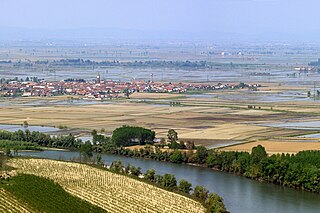
The province of Alessandria is an Italian province, with a population of some 425,000, which forms the southeastern part of the region of Piedmont. The provincial capital is the city of Alessandria.

The province of Asti is a province in the Piedmont region of Italy. Its capital is the city of Asti. To the northwest it borders on the Metropolitan City of Turin; to the southwest it borders on the province of Cuneo. To the east it borders on the province of Alessandria, while in the south it shares a very short border with the Ligurian province of Savona. It has an area of 1,504.5 square kilometres (580.9 sq mi), and, As of 2017, a total population of 215,871.

Casale Monferrato is a town in the Piedmont region of northwestern Italy, in the province of Alessandria. It is situated about 60 km (37 mi) east of Turin on the right bank of the Po, where the river runs at the foot of the Montferrat hills. Beyond the river lies the vast plain of the Po valley.

Giovanni Agnelli was an Italian businessman. He cofounded Fiat S.p.A, an automotive industrial company, in 1899.

Calosso is a rural comune (municipality) in the Province of Asti in the Italian region Piedmont, located about 60 kilometres (37 mi) southeast of Turin and about 20 kilometres (12 mi) south of Asti in the hilly area between the Tanaro and Belbo and on the borders between Monferrato and Langa. As of 31 January 2024, it had a population of 1,112 and an area of 15.7 square kilometres (6.1 sq mi).

Camino is a comune (municipality) in the Province of Alessandria in the Italian region Piedmont, located about 45 kilometres (28 mi) east of Turin and about 40 kilometres (25 mi) northwest of Alessandria. As of 31 December 2004, it had a population of 763 and an area of 18.4 square kilometres (7.1 sq mi).
Odalengo Piccolo is a commune (comune) of the Province of Alessandria in the northwest Italian region Piedmont. It is located in the Val Cerrina about 40 kilometres (25 mi) east of Turin, about 13 kilometres (8 mi) north of Asti and some 20 kilometres (12 mi) southwest of Casale Monferrato. The municipality extends over an area of 7.63 square kilometres (2.95 sq mi) in the hills to the south of the Stura del Monferrato torrent, where areas of woodland are interspersed by vineyards. It borders on the communes of Alfiano Natta, Castelletto Merli, Cerrina Monferrato, Odalengo Grande, and Villadeati.
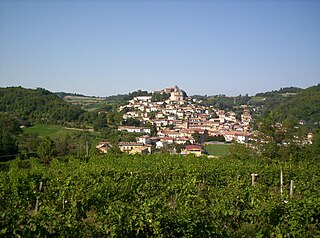
Ottiglio is a comune (municipality) in the Province of Alessandria in the Italian region Piedmont, located about 50 kilometres (31 mi) east of Turin and about 25 kilometres (16 mi) northwest of Alessandria.

Ozzano Monferrato is a comune (municipality) in the Province of Alessandria in the Italian region Piedmont, located about 50 kilometres (31 mi) east of Turin and about 30 kilometres (19 mi) northwest of Alessandria.

Pontestura is a commune with a population of 1,539 in the Province of Alessandria in the Italian region Piedmont. It is located on the right bank of the Po River about 50 kilometres (31 mi) east of Turin and about 10 kilometres (6 mi) west of Casale Monferrato and borders the following municipalities: Camino, Casale Monferrato, Cereseto, Coniolo, Morano sul Po, Ozzano Monferrato, Serralunga di Crea, and Solonghello.
San Giorgio Monferrato is a comune of the Province of Alessandria in the Italian region Piedmont. It is about 60 kilometres (37 mi) east of the regional capital Turin and about 25 kilometres (16 mi) northwest of Alessandria.
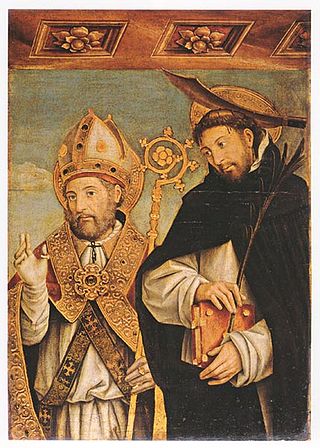
Evasius is believed to have been a missionary and bishop of Asti, in north-west Italy. He was forced to flee to the great Padan forest known as the Selva Cornea, where he and numerous followers were beheaded by pagan, or alternatively by Arian enemies, in the area of what is now Casale Monferrato. He is venerated as a saint of the Roman Catholic Church and is the patron of a number of towns in Piedmont and Lombardy. His cult is liveliest at Casale, where his remains are conserved in the cathedral dedicated to him.

The Rotaldo, known in its upper course as the Laio, is a 40-kilometre (25 mi) river of northern Italy, and a right-side tributary of the Po River. Most of its course falls within the Province of Alessandria and all of it within the former Province of Casale. The river is of modest flow and is heavily reliant on rainfall with a discharge near its mouth of 1.6 cubic metres per second (57 cu ft/s).

The Turco, Turchi, Turci or sometimes Turco dei De Castello family's rise to prominence originated in 12th-century Asti, Italy, and later the surrounding comunes of Frinco, Mombercelli, Montemagno, Tonco, Viale, and in part Barbaresco, Neive, Revigliasco d'Asti and Savigliano. They are considered one of the "Casane Astigiane", the major familial banking "houses" that powered the economy of medioeval Asti.
The Casane Astigiane were the major family banking houses of Asti, Italy in the Middle Ages. Their economic activities included currency exchange and lending.

SNIA S.p.A. was an Italian firm located in Milan that manufactured defence products, textiles, chemicals, perfumes, and corrugated paper among other products.
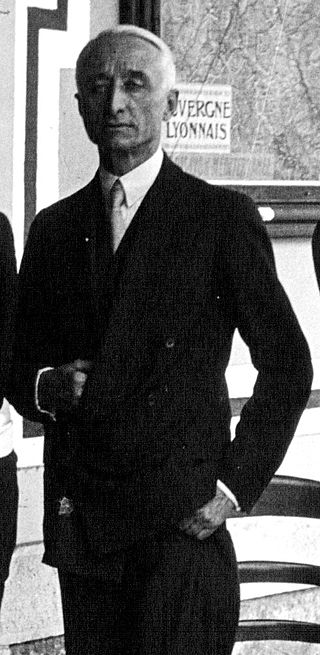
Riccardo Gualino was an Italian business magnate and art collector. He was also a patron and an important film producer. His first business empire was based on lumber from Eastern Europe and included forest concessions, lumber mills, ships and warehouses. The highly leveraged structure collapsed in 1912–13. Gualino was also involved in manufacturing and distributing cement, and during World War I (1914–18) built and operated cargo ships carrying goods such as coal from the United States to Europe. After the war he was engaged in many enterprises, some in partnership with Giovanni Agnelli of FIAT. His activities included banking, manufacture of rayon, confectionery, chemicals and artificial leather.
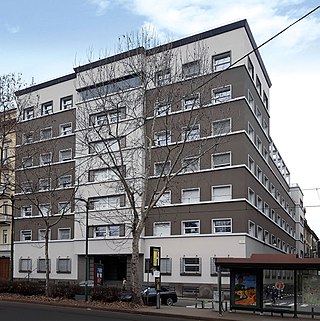
The Palazzo Gualino is an office building in Turin, Italy built in 1928–30 for the entrepreneur Riccardo Gualino by the architects Gino Levi-Montalcini and Giuseppe Pagano. It is an important example of early Italian rationalist architecture. The building was used for offices first by Gualino, then by Fiat and finally by the city of Turin, who sold it to a real estate developer in 2012. A project to convert the office building into high-end apartments was begun in 2012, but was abandoned in 2015.
Jessie Boswell was an English painter, active mainly in her adoptive Piedmont, known as being one of the painters of the Gruppo dei Sei Pittori (1929–1931) in that city.




















